#literary sources
Text
Roman sources 1 : Roman myths
I was asked by @subjects-of-the-king if I knew of some actual ancient Roman sources about the Roman gods in their specificity. Note that I am NOT an expert on Roman religion, and that I mostly rely on books written by experts and people that studied the Roman religion and culture - but I do know of a few “direct” sources, and I will split them down briefly in two.
The first part here being entirely focused around myths. All the texts below are about Roman authors writing the myths and legends of their mythology - and... if you are interested in the pre-Hellenized Roman gods, it won’t be of any real big use, because as I said, almost all of Roman mythology is just a copy-paste or remake of the Greek one. BUT these texts are without a doubt much needed to understand how the Romans received the Greek legends and how they re-adapted them to their own religion and culture (plus if you want to compare the Greek and Roman versions of the legend, you’ll need them)
The same way the Greeks myth have two huge literary monuments at their base (Homer and Hesiod’s works), the Roman mythology relies on two big authors that made a bridge between Roman and Greek culture by importing the Greek legends into the Roman world, or creating the first literary Roman legends. These authors are Ovid and Virgil.
Ovid is of course most famed for his “Metamorphoses”, (Transformations), a collection of tales of transformation from the Greek legends, re-adapted for the Roman religion (plus with some purely unique Roman legends). “Metamorphoses” is especially famous due to the reverse-influence it had on the reception of the Greek myths - as I said before, Ovid invented a LOT of rapes of “Classical mythology”, and turned a lot of consensual or un-ambiguous Greek mythological relationships into rapes and sexual abuses. Ovid however wrote many other works that are of relevance to the Roman mythology - two I can quote of the top of my head at “Fasti” (The Festivals) which details the Roman calendar, its various festivals and celebrations and the legends tied to them (so we do have here some additional info about Roman religion itself), and the Heroides (Heroines), which is basically a set of invented letters presenting mythological heroines in a confessional mode.
The other big behemoth of Roman mythology is without a doubt Virgil, thanks to his most famous work: Aeneid. THE Roman epic poem, conceived as a direct sequel to Homer’s “Iliad”, and inventing a cultural/legendary/historical link tying the Greek mythology to the Roman one, with the founding hero of the Roman civilization, Aeneas. Just like with Ovid, while the Aeneid is his most famous works, Virgil wrote many other pieces very informative about the Roman gods - such as the Georgics, which is... a poem about agriculture basically. But when you remember that originally the pre-Hellenized Roman gods were agricultural and nature gods, centered around a farmer-religion, it makes sense a poem about agricultural chores turns out to contain a lot of info about myths, legends, rites and gods.
Beyond those two main guys, there are several other authors that made their mark and influence over Roman myths.
# Statius, who wrote two Roman epics; the Thebaid and the Achilleid (two Roman rewrites of Greek myths, respectively the fight of Eteocles and Polynices for the throne of Thebes, and the life of Achilles). Another big Roman epic we know about (but unfinished) is the Argonautica, by Valerius Flaccus - which as the title says is a Roman retelling of the myth of Jason and the Argonauts.
# Seneca, who was one of the most famous play-writers of Ancient Rome, and left us numerous famous Roman theater plays presenting Roman versions of Greek myths: Medea, Phaedra, Thyestes, Troades, a Roman Oedipus, etc...
# Another BIG author when it comes to Roman myths is without a doubt Hyginus, who produced two works entirely about collecting myths. The first is “Fabulae”, which is one of the biggest myth compilations ever produced by a Roman authors, around three hundred different stories compiled together - though, due to the huge number of stories, Hyginus sacrificed the poetic complexity of Ovid and Virgil, and so he often tells the myths in very short, simplified forms so he could cram as much as he could. His second work is basically the same thing - but this time with a theme, “De Astronomica”, a compilation of myths entirely centered around astronomy and the constellations.
# Not a Roman author, but a Greek one tackling the Roman stories: I will briefly mention here Plutach’s famous “Parallel Lives”, of their full title “Lives of the Noble Greeks and Romans”. As the name says, Plutarch decided to present biographies of famous, noble and legendary Greek and Roman figures, placed together in parallels - and I include the text here because it covers the mythical first rulers of Rome, such as Romulus and Numa Pompilius.
# I will finish this first list with a very... unusual work. Apuleius “The Golden Ass”, also known as The Metamorphoses of Apuleius. It is a late Roman novel (written somewhere on the second century) and... it is a very strange, unusual weird story. It is an humoristic, bawdy, almost erotic story of a man ending up turned into a donkey by mistake and following the adventures of various people, but it also sometimes turns into grotesque and nightmarish horror (mostly thanks to the constant involvment of terrifying witches), and it ends up as a mystical quest under the Roman cult of the goddess Isis (it shows here the “late” part of the “late Roman era”, since Apuleius’ text depicts a Roman religion stuffed with “foreign gods”). And it contains numerous very influential tales of Greco-Roman legends - most notably, it is in this story that you will find THE most famous and complete version of the myth of Psyche and Cupid, so famous that during European Renaissance it was THIS version of the myth that was known, and no other.
(A second part of this post will arrive one of these days, centered about texts talking of religion and rites, rather than myths)
#roman mythology#roman myths#roman gods#roman texts#literary sources#ovid#virgil#roman epics#the golden ass
8 notes
·
View notes
Text

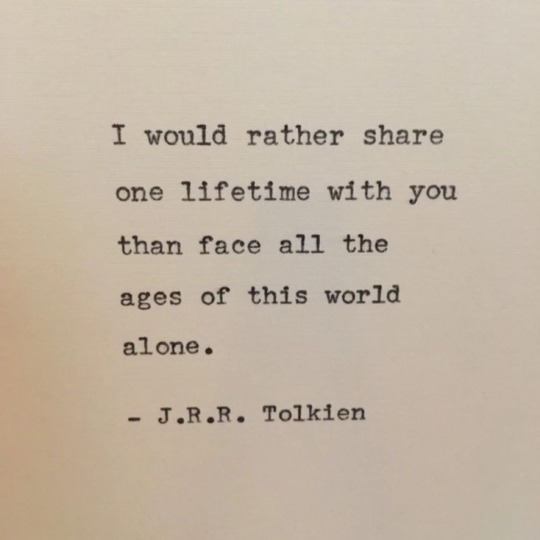

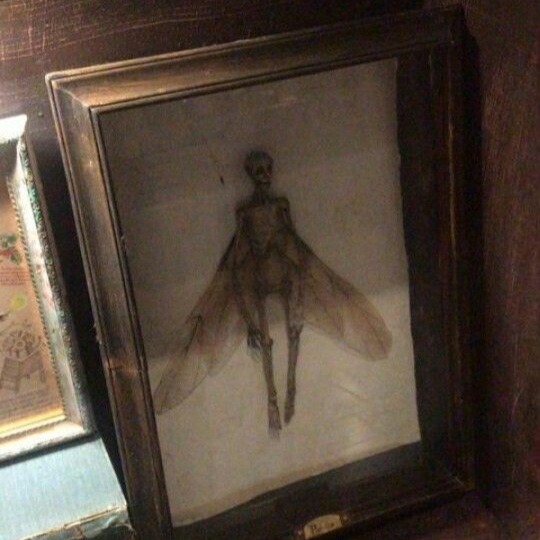
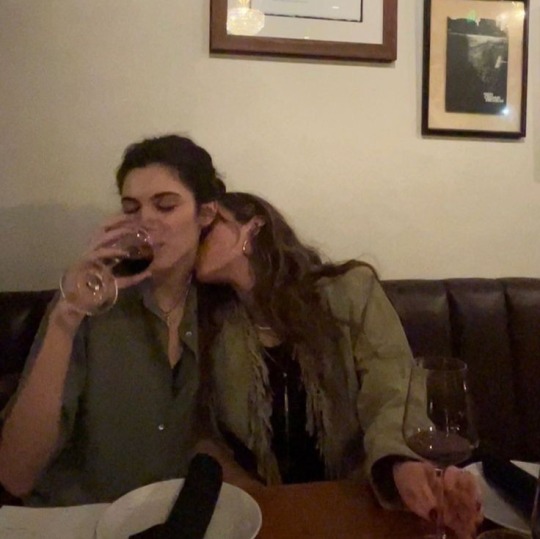
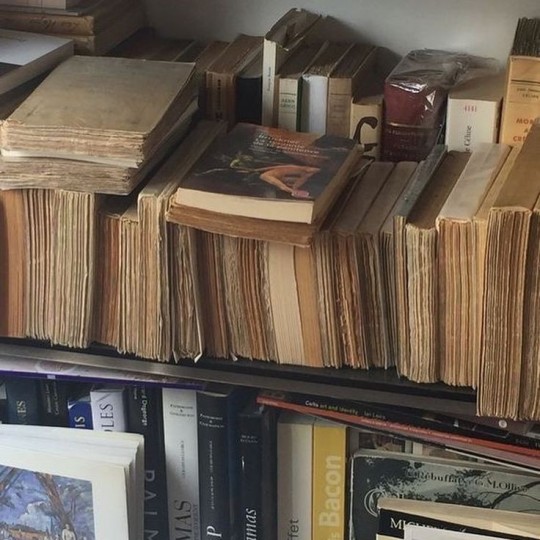

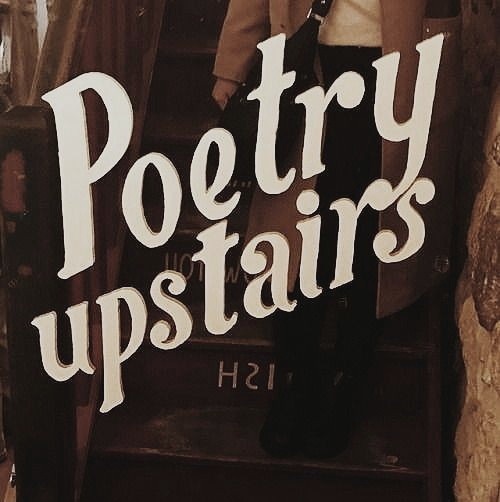

#dark academia#chaotic academia#books#light academia#romantic academia#romance#classic academia#parisian#aesthetic#poetry#quotes#literary quotes#literature academia#light academia aesthetic#dark academia aesthetic#coffee#classic#academia#source: pinterest#pinterest#moodboard#current mood#sapphic#sappho
3K notes
·
View notes
Text


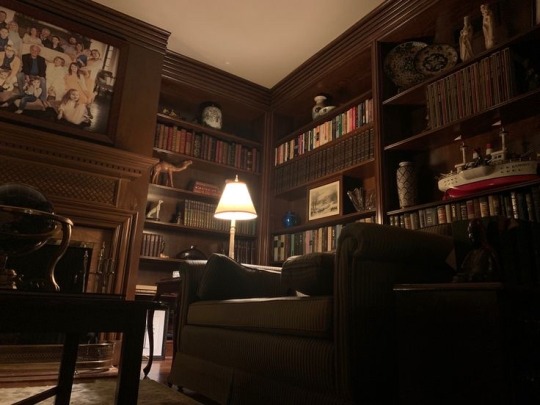
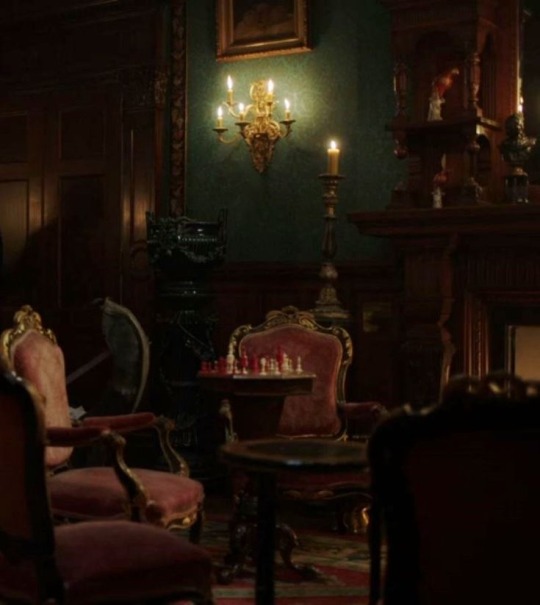


Places in which peace reigns
#dark academia#light academia#literature#chaotic academia#dark acadamia aesthetic#books#aesthetic#books and libraries#poetry#art#literary desire#dark academia moodboard#collection#classic academia#source: pinterest
2K notes
·
View notes
Text
Hozier reading list
Literary references in Hozier music
Alighieri, Dante; Inferno
The story of Francesca da Rimini as told in canto V inspired the song Francesca.
The album Unreal Unearth is arranged as a journey through nine circles of hell as they are described in the Inferno part of the Divine Comedy.
The title of the song Through Me (the flood) is a reference to the first lines of canto III.
Hozier read the translation by Robert Pinsky (https://www.rte.ie/radio/radio1/clips/22285692/)
Beckett, Samuel; Endgame
The song Wasteland, Baby! Takes inspiration from this play. (5 september 2023) (https://www.pastemagazine.com/music/hozier/cover-story-hozier-unreal-unearth)
O'Brien, Flann; the Third Policeman
The character of de Selby in the Third Policeman inspired the songs de Selby part 1 and 2.
Heaney, Seamus; At the Wellhead
The song To Noise Making (Sing) contains a8n audio fragment of Heaney reading this poem.
Heaney, Seamus; The Cure at Troy
The line "Or honey hope even on this side of the grave again?" In the song "To Noise Making (Sing) " is inspired by the line "History says, Don't hope / On this side of the grave." in this poem.
Joyce, James; A Portrait of the Artist as a Young Man
The line "Shaking the wings of their terrible youths" in the song Angel of Small Death & the Codeine Scene is derived from a line in this book. As mentioned in the interview with Zane Lowe for Apple Music (august 28, 2023) (https://youtu.be/y5JpgNIkOz4?si=Yg1GVewfZlHkdVm1)
Also mentioned as general inspiration in an interview with the Daily Meal (october 28, 2014) (https://www.thedailymeal.com/irish-born-musician-hozier-slithered-here-eden-bring-us-his-gospel)
Mack, dr. Katie
Astrophysicist dr. Katie Mack is mentioned by name in the song No Plan. A quote from the song is used in her book The End of Everything (Astrophysically speaking)
Neruda, Pablo, Sonnet XVII
The songs de Selby part 1 and part 2 take some inspiration from this poem. (Mentioned when introducing the song during a concert)
Ovid, Metamorphoses
The story of Icarus is mentioned in the song Sunlight and inspired the song I, Carrion (Icarian).
The story of Orpheus and Eurydice is mentioned in the song Talk.
Plato; The Allegory of the Cave
The phrase "Adding shadows to the walls of the cave" in the song Sedated refers to this story.
Swift, Jonathan; A Modest Proposal
Inspiration for the song Eat Your Young.
Wilde, Oscar; Chanson
The line "a rope in hand for your other man to hang from a tree" in the song From Eden" is inspired by the line "And a hempen rope for your own love / To hang upon a tree." in this poem.
Yeats, W. B.; The Second Coming
The line "To Bethlehem it slouched" in the song NFWMB is almost directly copied from this poem.
Yeats, W. B.; Leda and the Swan
Inspiration for the song Swan Upon Leda
Other books recommended/mentioned by Hozier
Amis, Martin; The Zone of Interest
Recommended by Hozier in an 'Ask Me Anything' before the release of the album Wasteland, baby! on reddit in 2019
Beckett, Samuel; Not I
Hozier joked the album Unreal Unearth would contain four tracks, two of them being recordings of him reading this play with his mouth full of marshmallows.
The cover art of Unreal Unearth is said to reference this play.
Bukowski, Charles
Mentioned as a teenage favorite (https://youtu.be/e5pFwDvcIGA)
Ó Cadhain, Máirtín; Graveyard Clay (Cré Na Cille)
Mentioned as his current read in an instagram Q&A on December 1, 2021
Eliot, T. S.
https://www.thedailymeal.com/irish-born-musician-hozier-slithered-here-eden-bring-us-his-gospel
Heaney, Marie; Over Nine Waves, a Book of Irish Legends
(Source? Mentioned on social media?)
Heaney, Seamus
https://www.irishtimes.com/culture/music/hozier-why-seamus-heaney-s-last-words-mean-so-much-to-me-1.3797926
Herbert, Frank; Dune
Mentioned as a current read/audiobook on How Long Gone podcast episode 614. March 6, 2024
Joyce, James; Ulysses
https://youtu.be/s0Ux72N4K10
Kierkegaard, Søren; The Sickness unto Death
(Source?)
Orwell, George; 1984
https://www.thedailymeal.com/irish-born-musician-hozier-slithered-here-eden-bring-us-his-gospel/
Rubin, Rick; The Creative Act
Mentioned as his current read in an interview for WNYC Radio, 17 March 2023
https://youtu.be/Cd2uxpD9Hc8?si=cJ8bKrfFeXk_WS2F
Salinger, J. D.; Catcher in the Rye
https://www.thedailymeal.com/irish-born-musician-hozier-slithered-here-eden-bring-us-his-gospel/
Wilde, Oscar
https://youtu.be/s0Ux72N4K10
https://www.thedailymeal.com/irish-born-musician-hozier-slithered-here-eden-bring-us-his-gospel/
Williams, Niall; This Is Happiness
Mentioned as his current read at a fan meet & greet (Bristol, 6 August 2023)
Yeats, W. B.
https://www.thedailymeal.com/irish-born-musician-hozier-slithered-here-eden-bring-us-his-gospel/
Poetry/stories read by Hozier in livestreams/videos (and the books he read them from)
3 July 2020 Instagram live
Seamus Heaney; Postscript (the Spirit Level)
Seamus Heaney; A Kite for Michael and Christopher (Station Island)
W. B. Yeats; No Second Troy (W. B. Yeats Poems selected by Seamus Heaney)
W. B. Yeats; To a Friend Whose Work Has Come to Nothing (W. B. Yeats Poems selected by Seamus Heaney)
Ovid, Daedalus and Icarus (Metamorphoses, translated by David Raeburn, penguin classics)
Sinéad Morrissey; & Forgive Us Our Trespasses (Being Human edited by Neil Astley)
Also mentioned; Staying Alive edited by Neil Astley
Seen on the table; Fear Not by Stephen James Smith
10 July 2020 Instagram live
Seamus Heaney; HÖFN (District & Circle)
Seamus Heaney; District & Circle (District & Circle)
Stephen Dunn; Sadness
Stephen Dunn; Sweetness
Ovid; Orpheus and Eurydice (Metamorphoses, translated by David Raeburn, penguin classics)
T. S. Eliot; The Love Song of J. Alfred Prufrock (Collected Poems 1909-1962)
Brendan Kennelly; Begin
17 July 2020 Instagram live
Ezra Pound; And the Days Are Not Full Enough
Wilfred Owen; Futility
James Joyce; A Flower Given to My Daughter
Pablo Neruda; Keeping Quiet
Langston Hughes; I, Too
Imtiaz Dharker; They'll Say She Must Be From Another Country
W. B. Yeats; When You Are Old
Stephen James Smith; On the Bus (Fear Not)
Seamus Heaney; Saint Kevin and the Blackbird
Seamus Heaney; Sweeney Praises the Trees (Sweeney Astray)
Maya Angelou; Touched by an Angel
Garrison Keillor; Supper
Pablo Neruda; Sonnet XCIV (If I Die) (100 Love Sonnets, translated by Stephen Tapscott)
T. S. Eliot; Ash Wednesday (Collected Poems 1909-1962)
Ovid, the Four Ages (Metamorphoses, translated by David Raeburn, penguin classics)
Also mentioned; Ireland, My Ireland by Stephen James Smith
25 July 2020 Instagram live
Anne Stevenson; The Spirit is Too Blunt an Instrument
Katie Mack; The Slow Fade to Black (the End of Everything, Astrophysically Speaking)
Pablo Neruda; Sonnet XVII (One Hundred Love Sonnets, translated by Mark Eisner)
Kahlil Gibran; On Love (the Prophet)
Sharon Olds; True Love
Rita Ann Higgins; The Did-You-Come-Yets of the Western World
7 August 2020 Instagram live
James Joyce; Araby (Dubliners)
Also mentioned A Portrait of the Artist as a Young Man by James Joyce
17 march 2021 Tiktok live
Brendan Kennelly; Begin
Derek Mahon; Everything is Going to Be Alright
Sinéad Morrissey; & Forgive Us Our Trespasses
Faisal Mohyuddin; Prayer (The Displaced Children of Displaced Children)
Pádraig Ó Tuama; How to Be Alone
Stephen James Smith; Dublin, You Are
Paula Meehan; Seed
Various reads
Seamus Heaney; At the Wellhead
https://youtu.be/uIBpT_rqUfA
Patrick Kavanagh; Peace
https://youtu.be/Iz1OXOFua4w
W. B. Yeats; He Wishes for the Cloths of Heaven
https://youtu.be/e5pFwDvcIGA
W. B. Yeats; A Coat
https://youtu.be/e5pFwDvcIGA
Seamus Heaney; Miracle
https://x.com/seamusheaneyest/status/1253626839316279296?s=20
#Hozier#Reading list#Literary references#There's still a few without source#And I haven't updated since march 31#But I don't think he mentioned any new books anyway#Sooo...#Enjoy. I guess
141 notes
·
View notes
Text
I've been doing a lot of reading lately about the history of vampires in fiction and how the vampire as we know it today first entered literature, and the subject is honestly fascinating. The traditional folklore around vampires and vampire-like creatures is largely very different from what we'd think of as a vampire today, and it's also very different from how vampires appeared in even their earliest literary incarnations.
For one thing, there's nothing particularly alluring about most traditional vampires. They're bloated corpses that have crawled out of their graves, not dashing mysterious counts in lonely castles. They're not a particularly stylish or sexy monster.
However, from pretty much the moment that western literature first turned to the vampire myth for inspiration, writers saw something in the concept to sexualize. The poem "Der Vampir" (The Vampire) by Heinrich August Ossenfelder is often cited as the first ever true literary depiction of a vampire (published 1748!), and it is about a man corrupting a chaste and religious woman through his unwanted kiss/vampiric bite. John William Polidori's 1819 short story "The Vampyre" is widely seen as the first work to truly codify vampire fiction, and the titular Vampyre Ruthven is in large part inspired by the womanizing Lord Byron. Le Fanu's Carmilla depicts an intense attraction between Carmilla and her victim Laura. Stoker's Count Dracula is a man with overly flushed lips and hair on his palms, marks of Victorian fears of sexuality.
From the very start, vampires in literature have been a sexual monster. They're emblems of the seductive and terrible—the kiss of death that you can't help but be drawn to anyway. A violent forced intimacy that will corrupt you and drain away your very life force. There's a great deal of xenophobia and fear of the un-christian in early vampire fiction as well, but the fear of sex and sexual assault have always been a driver of literary vampires' horror and allure. Writers seem eternally split between desire for the vampire and revulsion at that very lust, even from the moments that the creatures first graced the page.
There's a great tradition of vampiric fiction both using vampirism to evoke sexual predators and making vampires themselves desirably sexy. Thus, given that it is very concerned with sexual assault and bodily autonomy as themes, often uses predation by a vampire to evoke sexual violence, and is deeply horny about vampires and blood drinking, Jun Mochizuki's The Case Study of Vanitas is actually one of if not the best modern successor to the canon of early vampire literature. In this essay, I will
#rare vnc post on main bc starting off with my obvious vnc icon and url would spoil the punchline#wanna take y'all by surprise a little ;P#anyway this post is a joke but the point I'm making genuinely kinda isn't#you know how it is#I am genuinely fascinated by the ways that vnc is in conversation with the literary sources that it pulls from#it really is riffing on a LOT of the same ideas through a modern lens#vnc#vanitas no carte#the case study of vanitas#invasion of the frogs
483 notes
·
View notes
Text




Yes, be patient with me. My heart is heavy.
—Albert Camus
#quotes#literature#literary quotes#readers#books and reading#books & libraries#books and coffee#booksbooksbooks#coffee#books and literature#aesthetic#old aesthetic#moodboard#moodboards dark academia#dark aesthetic moodboard#mood board#source: pinterest#pinterest moodboard#romanticism#dark academia#academia aesthetic#dark academic aesthetic#dark academia books#dark academia vibes#dark academia moodboard#l#light academia#literature academia#literature quotes#romantic academia
31 notes
·
View notes
Text
Every day I am haunted by the fact JJK could be amazing but it will be just idk Bleach or something
#I've seen a lot of people complaining about the fact that it's impossible to fit the ending of every unfinished arc#in the five chapters that remain for the manga to end for good#And it all just... legitimises my fear and apprehension haha#And it's a pity! It's a pity! The dynamics were so good! And yet nothing! Sukuna was so good! And yet nothing!#It was so nice how he seemed to play with the idea of transcending human categories and values but even the values of curses so to speak#Well beyond everything. Well beyond positive/creative nihilism even! He was not like Mahito#I wonder if Mahito is more a negative nihilism with a funny edge or a positive nihilism. For now it seems positive#with how he seems to have said something like 'nothing matters so we can do whatever we want and create what matters'#But Sukuna transcends all that! It could have been interesting to see how that developed in a way that wasn't just childish edginess#But no. And then there's all the idea of curses and sorcerers not being all that different#and so not really entirely possible to say one side is good and the other bad#There was the idea of the very source of powers with fear and love playing a role here in such a juicy way#And then there's the entire thing happening with Gojo as a concept and the very concepts he plays with which I could eat like an apple#but also I would let those very concepts eat at my heart as a worm inside an apple#Full of holes and rotting inside out and yet delighting at the sweetness#It could all be so good! And yet! Most of the manga is a few sketched dynamics and concepts and a very long fight with Sukuna#promising half finished arcs#WHY it could have been so good. And I don't think criticism is a matter of 'fans being spoiled! Go write your story!' or something#It's not a matter of things not going as fans would want them to be. It's a matter of not writing well#or cohesively things established by the author themselves. And I think that's a fair criticism#If we are to take manga as an art‚ which I wholeheartedly support‚#then we can subject mangas to artistic or literary or whatever you want to call it analysis. There are works that are better constructed#than others‚ and there are works that have good ideas but poor execution. And it's always a pity#In the case of JJK it's truly breaking my heart and the comments I see around about these five last chapters are not helping xD#God it could be so good. So good. And I'm not talking about in specific to me‚ which yes that too given the topics‚#but just so good in general. It could be so good. It could have been so good#And yet it's starting to look more and more like any other shonen. It truly breaks my heart haha#I talk too much#Jujutsu Kaisen#I used Bleach because I think that's one of the mangas that has been the most a let down to the friends I have who like shonen
12 notes
·
View notes
Note
hi! do you have any advice/ tips on reading Hamlet/ Shakespeare on your own? I read some in highschool, but it was always with the aid of the teacher and course material. now im older and wanna read Hamlet, but i find it sorta daunting with the old English, heavily symbolism etc. etc. feels like im not completely understanding what im reading. basically, how do you go about reading and annotating Shakespeare? ty in advance!
hmm. well a lot of copies come with footnote annotations that help to translate some of the more unfamiliar words, phrases and things that might not make sense without context that the original audience would have been familiar with but have since been lost, so try to get your hands on one of those if you can. sparknotes also has a very good translation (just search online "sparknotes hamlet translation") into more contemporary english + annotations which can be helpful to bridge the gaps in your understanding of the original text (and there's no shame at all in that; i didn't understand a lot of the original text without guidance the first time i read it). my only other tip is to use a pencil to make any annotations directly onto the text itself if you have a physical copy, so that way if your interpretations change or become more complex as your understanding grows you can easily edit them and don't have to worry about "ruining" the pages with crossings-out or corrections. it can really help you to feel comfortable expressing your thoughts, because you don't have to worry about making mistakes.
#im not sure how best to advise on going about annotating the text from like#a literary analysis standpoint since i feel like thats such a personal thing#and to be honest i cant really explain how i do it. im just very obsessed with analyzing everything and finding#patterns and conflicts and i find literature a really interesting and rewarding source for that#i guess like. write down your thoughts as you go along? and revise them if they change?
212 notes
·
View notes
Text
A class on fairy tales (1)
As you might know (since I have been telling it for quite some times), I had a class at university which was about fairy tales, their history and evolution. But from a literary point of view - I am doing literary studies at university, it was a class of “Literature and Human sciences”, and this year’s topic was fairy tales, or rather “contes” as we call them in France. It was twelve seances, and I decided, why not share the things I learned and noted down here? (The titles of the different parts of this post are actually from me. The original notes are just a non-stop stream, so I broke them down for an easier read)
I) Book lists
The class relied on a main corpus which consisted of the various fairytales we studied - texts published up to the “first modernity” and through which the literary genre of the fairytale established itself. In chronological order they were: The Metamorphoses of Apuleius, Lo cunto de li cunti by Giambattista Basile, Le Piacevoli Notti by Giovan Francesco Straparola, the various fairytales of Charles Perrault, the fairytales of Marie-Catherine d’Aulnoy, and finally the Kinder-und Hausmärchen of Jacob and Wilhelm Grimm. There is also a minor mention for the fables of Faerno, not because they played an important historical role like the others, but due to them being used in comparison to Perrault’s fairytales ; there is also a mention of the fairytales of Leprince de Beaumont if I remember well.
After giving us this main corpus, we were given a second bibliography containing the most famous and the most noteworthy theorical tools when it came to fairytales - the key books that served to theorize the genre itself. The teacher who did this class deliberatly gave us a “mixed list”, with works that went in completely opposite directions when it came to fairytale, to better undersant the various differences among “fairytale critics” - said differences making all the vitality of the genre of the fairytale, and of the thoughts on fairytales. Fairytales are a very complex matter.
For example, to list the English-written works we were given, you find, in chronological order: Bruno Bettelheim’s The Uses of Enchantment ; Jack David Zipes’ Fairy Tales and the Art of Subversion ; Robert Bly’s Iron John: A Book about Men ; Marie-Louise von Franz, Interpretation of Fairy Tales ; Lewis C. Seifert, Fairy Tales, Sexuality and Gender in France (1670-1715) ; and Cristina Bacchilega’s Postmodern Fairy Tales: Gender and Narrative Strategies. If you know the French language, there are two books here: Jacques Barchilon’s Le conte merveilleux français de 1690 à 1790 ; and Jean-Michel Adam and Ute Heidmann’s Textualité et intertextualité des contes. We were also given quite a few German works, such as Märchenforschung und Tiefenpsychologie by Wilhelm Laiblin, Nachwort zu Deutsche Volksmärchen von arm und reich, by Waltraud Woeller ; or Märchen, Träume, Schicksale by Otto Graf Wittgenstein. And of course, the bibliography did not forget the most famous theory-tools for fairytales: Vladimir Propp’s Morfologija skazki + Poetika, Vremennik Otdela Slovesnykh Iskusstv ; as well as the famous Classification of Aarne Anti, Stith Thompson and Hans-Jörg Uther (the Aarne-Thompson-Uther Classification, aka the ATU).
By compiling these works together, one will be able to identify the two main “families” that are rivals, if not enemies, in the world of the fairytale criticism. Today it is considered that, roughly, if we simplify things, there are two families of scholars who work and study the fairy tales. One family take back the thesis and the theories of folklorists - they follow the path of those who, starting in the 19th century, put forward the hypothesis that a “folklore” existed, that is to say a “poetry of the people”, an oral and popular literature. On the other side, you have those that consider that fairytales are inscribed in the history of literature, and that like other objects of literature (be it oral or written), they have intertextual relationships with other texts and other forms of stories. So they hold that fairytales are not “pure, spontaneous emanations”. (And given this is a literary class, given by a literary teacher, to literary students, the teacher did admit their bias for the “literary family” and this was the main focus of the class).
Which notably led us to a third bibliography, this time collecting works that massively changed or influenced the fairytale critics - but this time books that exclusively focused on the works of Perrault and Grimm, and here again we find the same divide folklore VS textuality and intertextuality. It is Marc Soriano’s Les contes de Perrault: culture savante et traditions populaires, it is Ernest Tonnelat’s Les Contes des frères Grimm: étude sur la composition et le style du recueil des Kinder-und-Hausmärchen ; it is Jérémie Benoit’s Les Origines mythologiques des contes de Grimm ; it is Wilhelm Solms’ Die Moral von Grimms Märchen ; it is Dominqiue Leborgne-Peyrache’s Vies et métamorphoses des contes de Grimm ; it is Jens E. Sennewald’ Das Buch, das wir sind: zur Poetik der Kinder und-Hausmärchen ; it is Heinz Rölleke’s Die Märchen der Brüder Grimm: eine Einführung. No English book this time, sorry.
II) The Germans were French, and the French Italians
The actual main topic of this class was to consider the “fairytale” in relationship to the notions of “intertextuality” and “rewrites”. Most notably there was an opening at the very end towards modern rewrites of fairytales, such as Angela Carter’s The Bloody Chamber, “Le petit chaperon vert” (Little Green Riding Hood) or “La princesse qui n’aimait pas les princes” (The princess who didn’t like princes). But the main subject of the class was to see how the “main corpus” of classic fairytales, the Perrault, the Grimm, the Basile and Straparola fairytales, were actually entirely created out of rewrites. Each text was rewriting, or taking back, or answering previous texts - the history of fairytales is one of constant rewrite and intertextuality.
For example, if we take the most major example, the fairytales of the brothers Grimm. What are the sources of the brothers? We could believe, like most people, that they merely collected their tale. This is what they called, especially in the last edition of their book: they claimed to have collected their tales in regions of Germany. It was the intention of the authors, it was their project, and since it was the will and desire of the author, it must be put first. When somebody does a critical edition of a text, one of the main concerns is to find the way the author intended their text to pass on to posterity. So yes, the brothers Grimm claimed that their tales came from the German countryside, and were manifestations of the German folklore.
But... in truth, if we look at the first editions of their book, if we look at the preface of their first editions, we discover very different indications, indications which were checked and studied by several critics, such as Ernest Tomelas. In truth, one of their biggest sources was... Charles Perrault. While today the concept of the “tales of the little peasant house, told by the fireside” is the most prevalent one, in their first edition the brothers Grimm explained that their sources for these tales were not actually old peasant women, far from it: they were ladies, of a certain social standing, they were young women, born of exiled French families (because they were Protestants, and thus after the revocation of the édit de Nantes in France which allowed a peaceful coexistance of Catholics and Protestants, they had to flee to a country more welcoming of their religion, aka Germany). They were young women of the upper society, girls of the nobility, they were educated, they were quite scholarly - in fact, they worked as tutors/teachers and governess/nursemaids for German children. For children of the German nobility to be exact. And these young French women kept alive the memory of the French literature of the previous century - which included the fairytales of Perrault.
So, through these women born of the French emigration, one of the main sources of the Grimm turns out to be Perrault. And in a similar way, Perrault’s fairytales actually have roots and intertextuality with older tales, Italian fairytales. And from these Italian fairytales we can come back to roots into Antiquity itself - we are talking Apuleius, and Virgil before him, and Homer before him, this whole classical, Latin-Greek literature. This entire genealogy has been forgotten for a long time due to the enormous surge, the enormous hype, the enormous fascination for the study of folklore at the end of the 19th century and throughout all of the 20th.
We talk of “types of fairytales”, if we talk of Vladimir Propp, if we talk of Aarne Thompson, we are speaking of the “morphology of fairytales”, a name which comes from the Russian theorician that is Propp. Most people place the beginning of the “structuralism” movement in the 70s, because it is in 1970 that the works of Propp became well-known in France, but again there is a big discrepancy between what people think and what actually is. It is true that starting with the 70s there was a massive wave, during which Germans, Italians and English scholars worked on Propp’s books, but Propp had written his studies much earlier than that, at the beginning of the 20th century. The first edition of his Morphology of fairytales was released in 1928. While it was reprinted and rewriten several times in Russia, it would have to wait for roughly fifty years before actually reaching Western Europe, where it would become the fundamental block of the “structuralist grammar”. This is quite interesting because... when France (and Western Europe as a whole) adopted structuralism, when they started to read fairytales under a morphological and structuralist angle, they had the feeling and belief, they were convinced that they were doing a “modern” criticism of fairytales, a “new” criticism. But in truth... they were just repeating old theories and conceptions, snatched away from the original socio-historical context in which Propp had created them - aka the Soviet Union and a communist regime. People often forget too quickly that contextualizing the texts isn’t only good for the studied works, we must also contextualize the works of critics and the analysis of scholars. Criticism has its own history, and so unlike the common belief, Propp’s Morphology of fairytales isn’t a text of structuralist theoricians from the 70s. It was a text of the Soviet Union, during the Interwar Period.
So the two main questions of this class are. 1) We will do a double exploration to understand the intertextual relationships between fairytales. And 2) We will wonder about the definition of a “fairytale” (or rather of a “conte” as it is called in French) - if the fairytale is indeed a literary genre, then it must have a definition, key elements. And from this poetical point of view, other questions come forward: how does one analyze a fairytale? What does a fairytale mean?
III) Feuding families
Before going further, we will pause to return to a subject talked about above: the great debate among scholars and critics that lasted for decades now, forming the two branches of the fairytale study. One is the “folklorist” branch, the one that most people actually know without realizing it. When one works on fairytale, one does folklorism without knowing it, because we got used to the idea that fairytale are oral products, popular products, that are present everywhere on Earth, we are used to the concept of the universality of motives and structures of fairytales. In the “folklorist” school of thought, there is an universalism, and not only are fairytales present everywhere, but one can identify a common core for them. It can be a categorization of characters, it can be narrative functions, it can be roles in a story, but there is always a structure or a core. As a result, the work of critics who follow this branch is to collect the greatest number of “versions” of a same tale they can find, and compare them to find the smallest common denominator. From this, they will create or reconstruct the “core fairytale”, the “type” or the “source” from which the various variations come from.
Before jumping onto the other family, we will take a brief time to look at the history of the “folklorist branch” of the critic. (Though, to summarize the main differences, the other family of critics basically claims that we do not actually know the origin of these stories, but what we know are rather the texts of these stories, the written archives or the oral records).
So the first family here (that is called “folklorist” for the sake of simplicity, but it is not an official or true appelation) had been extremely influenced by the works of a famous and talented scholar of the early 20th century: Aarne Antti, a scholar of Elsinki who collected a large number of fairytales and produced out of them a classification, a typology based on this theory that there is an “original fairytale type” that existed at the beginning, and from which variants appeared. His work was then continued by two other scholars: Stith Thompson, and Hans-Jörg Uther. This continuation gave birth to the “Aarne-Thompson” classification, a classification and bibliography of folkloric fairytales from around the world, which is very often used in journals and articles studying fairytales. Through them, the idea of “types” of fairytales and “variants” imposed itself in people’s minds, where each tale corresponds to a numbered category, depending on the subjects treated and the ways the story unfolds (for example an entire category of tale collects the “animal-husbands”. This classification imposed itself on the Western way of thinking at the end of the first third of the 20th century.
The next step in the history of this type of fairytale study was Vladimir Propp. With his Morphology of fairytales, we find the same theory, the same principle of classification: one must collect the fairytales from all around the world, and compare them to find the common denominator. Propp thought Aarne-Thompson’s work was interesting, but he did complain about the way their criteria mixed heterogenous elements, or how the duo doubled criterias that could be unified into one. Propp noted that, by the Aarne-Thompson system, a same tale could have two different numbers - he concluded that one shouldn’t classify tales by their subject or motif. He claimed that dividing the fairytales by “types” was actually impossible, that this whole theory was more of a fiction than an actual reality. So, he proposed an alternate way of doing things, by not relying on the motifs of fairytales: Propp rather relied on their structure. Propp doesn’t deny the existence of fairytales, he doesn’t put in question the categorization of fairytales, or the universality of fairytales, on all that he joins Aarne-Thompson. But what he does is change the typology, basing it on “functions”: for him, the constituve parts of fairytales are “functions”, which exist in limited numbers and follow each other per determined orders (even if they are not all “activated”). He identified 31 functions, that can be grouped into three groups forming the canonical schema of the fairytale according to Propp. These three groups are an initial situation with seven functions, followed by a first sequence going from the misdeed (a bad action, a misfortune, a lack) to its reparation, and finally there is a second sequence which goes from the return of the hero to its reward. From these seven “preparatory functions”, forming the initial situation, Propp identified seven character profiles, defined by their functions in the narrative and not by their unique characteristics. These seven profiles are the Aggressor (the villain), the Donor (or provider), the Auxiliary (or adjuvant), the Princess, the Princess’ Father, the Mandator, the Hero, and the False Hero. This system will be taken back and turned into a system by Greimas, with the notion of “actants”: Greimas will create three divisions, between the subject and the object, between the giver and the gifted, and between the adjuvant and the opposant.
With his work, Vladimir Propp had identified the “structure of the tale”, according to his own work, hence the name of the movement that Propp inspired: structuralism. A structure and a morphology - but Propp did mention in his texts that said morphology could only be applied to fairytales taken from the folklore (that is to say, fairytales collected through oral means), and did not work at all for literary fairytales (such as those of Perrault). And indeed, while this method of study is interesting for folkloric fairytales, it becomes disappointing with literary fairytales - and it works even less for novels. Because, trying to find the smallest denominator between works is actually the opposite of literary criticism, where what is interesting is the difference between various authors. It is interesting to note what is common, indeed, but it is even more interesting to note the singularities and differences. Anyway, the apparition of the structuralist study of fairytales caused a true schism among the field of literary critics, between those that believe all tales must be treated on a same way, with the same tools (such as those of Propp), and those that are not satisfied with this “universalisation” that places everything on the same level.
This second branch is the second family we will be talking about: those that are more interested by the singularity of each tale, than by their common denominators and shared structures. This second branch of analysis is mostly illustrated today by the works of Ute Heidmann, a German/Swiss researcher who published alongside Jean Michel Adam (a specialist of linguistic, stylistic and speech-analysis) a fundamental work in French: Textualité et intertextualité des contes: Perrault, Apulée, La Fontaine, Lhéritier... (Textuality and intertextuality of fairytales). A lot of this class was inspired by Heidmann and Adam’s work, which was released in 2010. Now, this book is actually surrounded by various articles posted before and after, and Ute Heidmann also directed a collective about the intertextuality of the brothers Grimm fairytales. Heidmann did not invent on her own the theories of textuality and intertextuality - she relies on older researches, such as those of the Ernest Tonnelat, who in 1912 published a study of the brothers Grimm fairytales focusing on the first edition of their book and its preface. This was where the Grimm named the sources of their fairytales: girls of the upper class, not at all small peasants, descendants of the protestant (huguenots) noblemen of France who fled to Germany. Tonnelat managed to reconstruct, through these sources, the various element that the Grimm took from Perrault’s fairytales. This work actually weakened the folklorist school of thought, because for the “folklorist critics”, when a similarity is noted between two fairytales, it is a proof of “an universal fairytale type”, an original fairytale that must be reconstructed. But what Tonnelat and other “intertextuality critics” pushed forward was rather the idea that “If the story of the Grimm is similar but not identical to the one of Perrault, it is because they heard a modified version of Perrault’s tale, a version modified either by the Grimms or by the woman that told them the tale, who tried to make the story more or less horrible depending on the situation”. This all fragilized the idea of an “original, source-fairytale”, and encouraged other researchers to dig this way.
For example, the case was taken up by Heinz Rölleke, in 1985: he systematized the study of the sources of the Grimm, especially the sources that tied them to the fairytales of Perrault. Now, all the works of this branch of critics does not try to deny or reject the existence of fairytales all over the world. And it does not forget that all over the world, human people are similar and have the same preoccupations (life, love, death, war, peace). So, of course, there is an universality of the themes, of the motives, of the intentions of the texts. Because they are human texts, so there is an universality of human fiction. But there is here the rejection of a topic, a theory, a question that can actually become VERY dangerous. (For example, in post World War II Germany, all researches about fairytales were forbidden, because during their reign the Nazis had turned the fairytales the Grimm into an abject ideological tool). This other family, vein, branch of critics, rather focuses on the specificity of each writing style, of each rewrite of a fairytale, but also on the various receptions and interpretations of fairytales depending on the context of their writing and the context of their reading. So the idea behind this “intertextuality study” is to study the fairytales like the rest of literature, be it oral or written, and to analyze them with the same philological tools used by history studies, by sociology study, by speech analysis and narrative analysis - all of that to understand what were the conditions of creation, of publication, of reading and spreading of these tales, and how they impacted culture.
#fairy tales#fairytales#fairytale#fairy tale#a class on fairytales#brothers grimm#grimm fairytales#charles perrault#perrault fairytales#history of fairytales#vladimir propp#aarne-thompson classification#aarne-thompson#analysis of fairytales#critics of fairytales#book reference#sources#fairytale research#literary vs folklorist#which actually should be more intertextuality vs folklorist
106 notes
·
View notes
Note
i feel like slightly younger than marius mael is the best just for flavor reasons lol. reeaally curious to know what you think
I think I usually land on slightly younger but not like a baby. Like early 30s maybe. BUT I'LL TELL YOU SOME THOUGHTS OF WHY I LIKE EACH OR WHY EACH COULD WORK:
Under 30: First of all because of Jesse's chapter in QOTD--Maharet was turned around age 20 I think? And for Jesse, I'm sure there's that sort of uncanny thing where your mind fills in blanks and makes excuses, like, her "aunt" has been around her whole life so like gee golly I guess she just looks young for her age! Except that there's like the vampire uncanniness too, so whatever you judge as an age doesn't super matter. So like, Mael blending in as one of her guy friends in his early 20s would make sense. Jesse DOES also clock him as not being human, so again I think the uncanniness might not make her peg either of them as a certain age.
I do worry if this clashes with the idea that he could properly be a priest? Caesar said that it takes 20 years to train a priest, but A) A lot of what Caesar said is like anti-Keltoi propaganda and might not be accurate since the Druids famously never left anything in writing, so there's very little first hand information about them. B) MAYBE IT'S OKAY BECUASE IN VC-VERSE TESKHAMEN IS REAL AND MAEL WAS REALLY COMMUNING WITH HIM SO IF THERE WAS LIKE MAGIC AFOOT IN THE COMMUNITY MAYBE HE GOT FAST TRACKED OR RESPECTED AS BEING SPECIAL IDK. I can work with it and make excuses lol.
I LOVE the idea of him being like a young man because of how much madder that would make Marius, plus the way he likes to mentor young blonde men lol. But it might like hurt him even worse if the author of all his misfortunate is like SOME KID.
In his 30s: Personally I usually land here because I DO wonder how long it takes him to gain status in his community and become a priest (in his 30s is still fast tracking it but maybe feels more plausible LOL) and I enjoy the idea of he and Marius being sort of similar to each other. Like, Marius often gets used as the example of Turning an Older Guy and what it means for his temperament and the way it translates to his immortality. I like imagining Mael as around Marius's age for that reason, like I want to remove all his excuses why Mael is a young stupid kid or even an old salty jerk--it forces Marius to confront that Mael is ALSO someone who is chill and smart and has had enough life experience. BUT WHILE THERE'S A WINDOW WHERE THEY COULD BE SIMILAR IN AGE, OR MAEL COULD BE A TAD OLDER, I ALSO STILL ENJOY MARIUS BEING LIKE "HE'S YOUNGER THAN ME I HATE THIS!" BECAUSE HIS AGE AND SELF-PERCEIVED WISDOM & EXPERIENCE ARE IMPORTANT TO HIS IDENTITY AND HE FEELS BELITTED LOL.
In his 40s: Makes sense for the above reason! But I like to skew younger personally just for the Marius ageism dynamic lol. Also there's something about him being a foil to Marius where like, if they're very similar in other ways it can kind of emphasize how their atheism/religion contrasts each other and affects them as people.
Over 50: ALSO POSSIBLE and it's hilarious bc in the audiobook the narrator reads him like such a grouchy old man lmao. I could see this causing a lot of resentment because Marius likes to be the oldest and wisest in the room. I could see him also being younger because Marius insults him every chance he gets and I just think he would've told us that Mael is like an old hag if it were true lol. Anyway wondering how this effects Marius's barbarian kink and how he submits to men.
#btw ive been meaning to write a post when i have a minute about like the experience of transformative fandom#and how like if youre a person who sees the source as sort of dynamic and malleable that you wonder things like this#vs only ever seeing the source as a static topic that needs to be discussed like a literary essay#and how there's friction when people don't allow both types of fandoming to exist in the same space#because ive been seeing some bullshit lately with people taking the source too literally and not allowing anyone to play with it#like none of this stuff is in the books but im trying to write a fanfic so what do you fucking want me to do LOL#sorry i guess ill be boring and not develop any of these dynamics because canon didnt give me an answer lol#and wahts INTERESTING is that many versions of the text can co-exist when you ask questions like this#like rereading Mael scenes and imagining him as 20 or imagining him as 60 makes the scenes very different!#and that's cool and we should talk about it!#anyway sorry i feel like i blew my load with that post by turning it into a tag rant but if i can articulate myself later ill try LOL#mael#marius/mael#marius de romanus#deep ass thoughts about vampires
8 notes
·
View notes
Text
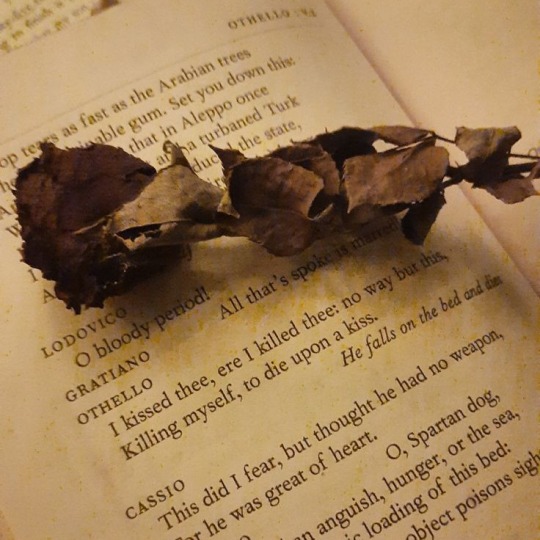
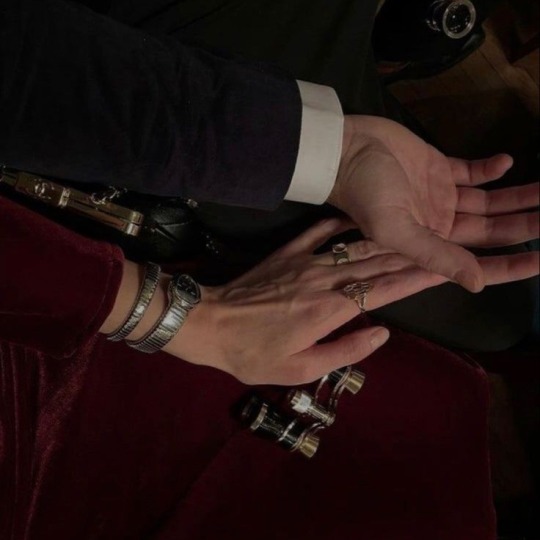


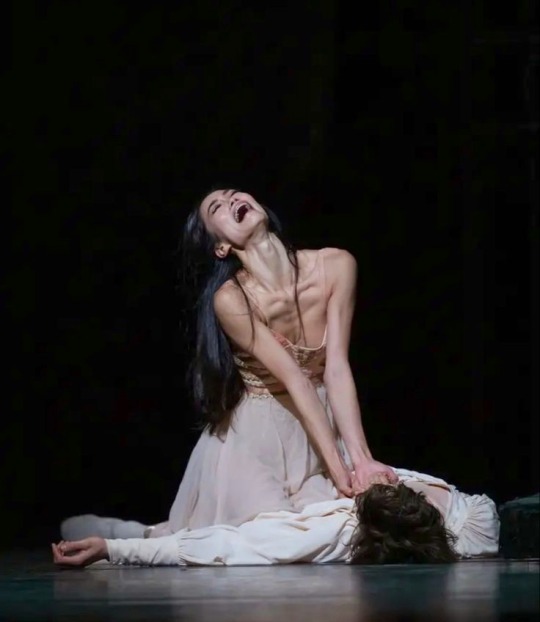


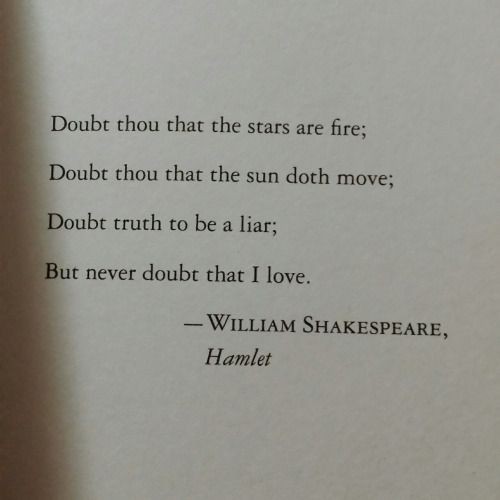
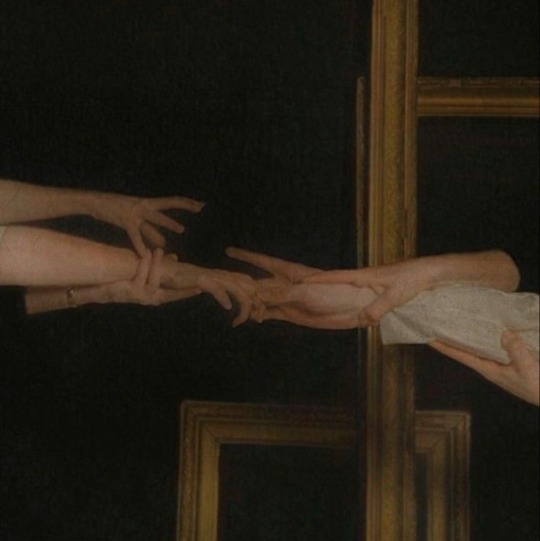
moodboard: theatre student
#theatre#theatre academia#dark academia aesthetic#dark academia#dark aesthetic#booklr#books#ballet aesthetic#theatre kid#light academia aesthetic#light academia#literature academia#literature#uni student#chaotic academia#literary quotes#quotes#moodboard#current mood#source: pinterest#pinterest#classic academia#romantic academia#romanticism
323 notes
·
View notes
Text
The funniest part of PGTE is the Frederic chapter where he just starts reciting Aragon’s speech at the Black Gate
#There’s a lot I love about PGTE but sometimes it’s a bit too obvious what literary/historical sources it’s cribbing from#pgte
9 notes
·
View notes
Text
Smoking, it would be well to add, was considered part of the whole duty of a Romantic man. The cigar, being Byronic, was affected by the "fatally" inclined; the pipe came, not from England, but from Germany; it was Faust-like, Hoffmannesque; it was also Flemish, of course, and the Flemish painters, like Steen and Teniers, were in high repute. A pipe signified a more jolly potatory spirit than a cigar, but it was always possible for the irreconcilable satanics to regard the breathing out of smoke from either as symbolically demoniac. The cigarette was not despised, but its popularity was due also to its picturesque associations. Spain was the home of the cigarette, the papelito as Borel and his friends fondly called it. When they rolled their fragrant Maryland lovingly in the papel they assumed a Spanish allure, Granada rose before their eyes, and invisible guitars played "Avez-vous vu dans Barcelone?" However, cigarettes would have been out of place in the prismatic flames of the punch-bowl. Their Spanish nonchalance suited better the light of day: evening shadows were consecrated to gloom and frenzy, Northern spirits.
Vie de Bohème a Patch of Romantic Paris, Orlo Williams
#orlo just writing a how to be a 1830’s romantic guide here xD#cw smoking#the book in source is the same than before but this edition has illustrations#reference#(the ideal drink was punch bc the students in faust drank it)#i just love their determination to model their lives after their literary faves x)#so relatable
67 notes
·
View notes
Text
i think the most interesting thing about morpho is just how starkly different he is from the standard Kirby series design framework.
rather than taking simple, broad strokes tropes and making them kirby themed - "supercomputer decides organic life is extraneous", "alien virus apocalypses a planet", any number of "megalomaniac tries to take over" or "evil wizard wreaks havoc" plots - morpho instead arguably follows the pokemon school of design wherein he directly takes from a million real-world cultural and mythological sources and collates those all into a single character.
specifically the fact that he references no less than four actual, real-world views of the afterlife. direct references to real religions/philosophies (not just simply calling a character "a god") are rare enough in the series that they're always jarring, but four? damn. they made morpho a psychopomp and they really wanted you to know it.
this all follows through in what he actually does in-game, too. both times we've seen morpho enact his power, it was to move on souls that by all means should have passed already. people joke and freak out about The Butterfly and omg don't let it touch you!!!! but man, he's not the god of death. he's a guide. he doesn't automatically kill things just by touching them, that's not his job.
i don't think morpho will rise to the position of serious, central character - his whole schtick kind of works best if he remains in this semi-canon "he kind of just shows up sometimes, isn't that cool" category - but he's definitely like, a Feature of the series' theology.
now if only we could get an answer on what the hell necrodeus is we'd be set lmao
#kirby#morpho knight#kirby morpho knight#he's interesting. it's basically unheard of that we get a kirby character who is directly lifted from real world sources like this#instead of just Generic Literary Ideas
18 notes
·
View notes
Text
i'm taking the word "celtic" away from medieval french scholars until they stop describing everything a bit odd and magical as deriving from "celtic folklore"
#especially when they say this and then explicitly name an irish literary source#french romances get to be 'medieval french literature' but irish stories are 'celtic folklore' ... okay#would love them to actually read some of the so-called 'celtic' sources they claim are influencing their texts#but they don't. they just cite fucking loomis. every time.
32 notes
·
View notes
Text
SPEAKING OF WHICH are there like any chill wizard101 discord servers or group chats that I could join. Or if anyone just wanna add me on discord shoot me a tumblr DM because I'm lonely and I like you guys :)
#ive had this thought for a while BUT IM JUST SHY. but after the soap opera morganthe dream i just had i need wizard friends to yell at#i got like one wizard mutual on discord already. if youre reading this you know who u are. love you /p <3#other than that one person NONE OF MY BEST FRIENDS ON DISCORD PLAY THE GAME AND IM LOBELY#I WANNA TALK ABOUT WIZARDS AND SHIT#altho ill probably be a useless discord discussion partner because i have no literary comprehension-#-and i havent played the source material in years. okay#all my knowledge on wizard101 is either personal headcanons im now considering as facts or secondhand knowledge from the internet#also my ocs. i love talking about my ocs even though they have the depth of cardboard#ALSO LOVE HEARING ABOUT OTHER PPLS OCS THATS MY FAVORITE THING TO READ FROM MY FRIENDS#like you could dm me at 4 in the morning to talk about your ocs i would be so happy#altho fair warning i can suck at dms bc im an anxious little chihuahua so if ur gonna add me i must warn u. i text back 5 years later#either i send 200 messages in the span of 5 minutes or you wont hear from me until we're both 30. sorry thats just the autism for u#BUT YEAH if anyone wants to add me they can#this fandom is like the only fandom in the world im comfy with interacting with LMAO#wizard101#w101#wiz101#text posts
20 notes
·
View notes